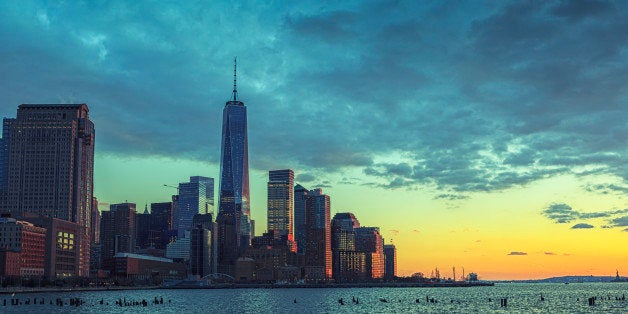
The Tribeca Film Festival turns 15 this year, and the state of the festival, and the film industry in New York, has never been stronger.
In 2002, many said our city -- and particularly downtown Manhattan -- would never fully recover from the attacks of September 11th and questioned if New York was careening back into the 1970s urban nightmare.
The inaugural Tribeca Film Festival stood as one of the many powerful symbols in our city stating loudly: we will recover -- and recover even stronger. The creative community played an impactful role in the revitalization of a city, and since then it has become a celebration in its own right, and a reflection of the growing and changing landscape of media and entertainment.
Jane Rosenthal, Robert De Niro and Craig Hatkoff came together and envisioned a festival to bring vitality to a devastated downtown, and found a willing partner in new Mayor Michael Bloomberg, who saw the critical role the creative community could play in spurring economic development and the marketing of a city. The Tribeca Film Festival was an early manifestation of that vision.
After only 120 days of planning, the Festival launched with the help of more than 1,300 volunteers. It was a smashing success. More than 150,000 people attended and films from across all genres were featured. The convening power and sense of community the Film Festival established was an extraordinary statement in post-9/11 New York City.
The Festival is well known for helping to invigorate the city, especially downtown, at a time of need, but perhaps as consequential was the Film Festival's role as a foundational component in what became a revolution in the city's film and television industry.
Utilizing the success of the Film Festival as a proof point, the Bloomberg Administration began to reshape New York City's relationship with the entertainment industry (Bloomberg LP and Bloomberg Philanthropies have been generous supporters of the Film Festival since day one).
City government took a new approach to customer service and marketing the industry, making the city a more attractive place to operate. The nation's first municipal level tax credit for film and television production was passed, adding more incentive to shoot in New York and making the city more competitive with previously cheaper, but less iconic shooting locations. The creation of the 'Made in NY' brand further tapped into a sense of local pride and created a rallying cry and a unifying sentiment for the growing film community.
The result: jobs.
While technology and other factors shrunk the number of entertainment jobs across the country, New York City experienced a boom.
The number of industry jobs in New York City bucked the national trend, increasing by nearly 30 percent since 2002, to an all-time high of 130,000. The growth continued despite the 2008 economic downturn. While Wall Street and other industries were shedding jobs, the media and entertainment industry was hiring.
From directors to producers, costume designers to set builders, gaffers to production assistants, the industry was creating opportunity up and down the economic ladder. It was also supporting over 4,000 ancillary businesses like florists, dry cleaners, lumber supply yards, and catering companies that supplied goods and services to productions. By 2013, 300 feature films and more than 100 TV shows were being shot each year in New York City. The increase in film production generated $7.1 billion in spending annually in the entertainment sector, an increase of more than 50 percent from 2002; today the industry generates $8.7 billion to the local economy.
From tax credits, to creative marketing and branding, and workforce development and training, the city's new holistic approach delivered. It meant more jobs for New Yorkers and a community contributing to the city's growth and reputation as a diverse creative capital.
The Tribeca Film Festival has served as an annual celebration of the success of film in the city, reminding us of the talent, creativity and diversity of the film community here.
It began as part of the City's post-9/11 revival, then became a part of the city's makeover of an entire industry -- which has had lasting, tangible economic benefits for families across the five boroughs.
In the lineup at this year's Festival, which includes forays into virtual reality, it's easy to see that in 2016 content creation is about more than traditional filmmaking. With Amazon, Netflix and other streaming services emerging, it's clear a new paradigm for distribution, and new opportunities for independent content creators has arrived. As the economics of global production shift along with the new realities of non-linear distribution, the industry is at a critical turning point. To maintain media and entertainment as a driver of economic impact, the industry needs to rally together and build a roadmap for this new terrain.
The industry has a unique ability to come together in support of the things it values most. It's now time for the industry to assess what it needs to continue to thrive in the face of disruption and reinvention. The Tribeca Film Festival and New York City's subsequent film explosion can serve as a model for the type of creative thinking necessary to evolve and succeed in changing times.